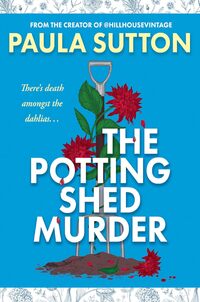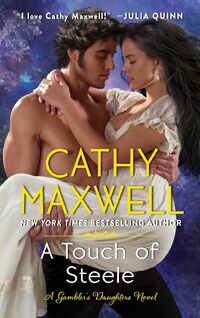In The First Five Pages: A Writer’s Guide to Staying Out
of the Rejection
Pile, writer and former literary agent Noah Lukeman
claims that the amount
of time you have to grab your reader’s attention --
including that of an agent
or editor -- is, you guessed it, five pages. Lukeman may’ve
been a bit generous
in this; other testimonies I’ve heard put the number closer
to one page. Or
half of one.
Whatever the actual number, and no matter how intimidating
it ends up being,
the message is undeniable: Your story has to start with a
strong opening scene.
And despite the fact that all of us will be writing very
different novels, on
varied subjects and in divergent styles, there are a number
of components that
all good opening scenes have in common.
A good opening scene:
1. Has a compelling hook. A hook is
an opening line
that entices the reader into your story by (1) beginning in
a clear moment of
action or interaction and (2) serving as a tease, revealing
just enough
information to ground the reader in the moment while
maintaining enough mystery
-- through the careful omission of certain information -- to
keep her reading.
By moment of action, I don’t mean that you begin with a bomb
ticking,or someone
running for his life, or a massive explosion. Rather it
means that you avoid
synopsis, stage direction, and backstory by dropping us
directly into a scene
in progress so that were in the midst of the action, or
in medias res.
(Such a direct opening can be particularly difficult for the
meticulous writer,
who's thought so much about her protagonist and his
backstory that she's not
really sure where to begin.)
Likewise, the tease of a compelling hook is not about
intentionally hiding
things from the reader, making it difficult for her to
figure out what's going
on. Inexperienced writers often confuse abstraction for
mystery, and they'll
believe that an interesting opening scene is one where the
reader has no clue
what's going on and has to figure it out for himself, as
when the reader is
dropped into the middle of a dream, or a drug trip, or a
riot, or the ocean, or
whatever. ("What was that? Who's talki -- wait, something
was touching her
now -- Is that a voice she heard? Who's talking? And what
was touching her on
the leg? And is that a white glowing mist in the distance --
?") The
result, as you can see, is less one of mystery than
frustration, which is
obviously not what you want your reader to experience -- on
page one or
anywhere else.
So let's consider what we do mean by a compelling hook.
Let's say your opening
scene takes place in a dentist's office, with your
protagonist going in for a
root canal. Probably your first inclination would be to
begin with some
straight-up information getting the character there:
"Barbara Morris
walked into the dentist's office and up to the
receptionist's window to sign in
for her root canal." But while that's very informative,
it's
also a bit of
a bore. How, then, might we convey the same basic
information -- we're in a
dentist's office for a procedure -- that begins in the
action of the moment and
also holds enough mystery to convince the reader to keep
going?
Maybe something like this: "Barbara Morris breathed in the
hissing gas and
immediately felt her face sliding off her skull."
At the baseline, this conveys the same basic information as
the previous first
line we tried. But it puts us in the moment, with the reader
feeling as if he
has that little hissing mask on his face, too, already an
improvement over the
first. Plus, in the first line we tried out, there's very
little mystery
involved; we know what's likely to come next (the character
is going to speak
to the receptionist). But in the second one, we get the
feeling that anything
might still happen: Barbara Morris might panic and try to
take the mask off;
she might accidentally reveal her darkest secret while loopy
on gas; she might
look at those two hairy dentist's hands coming toward her
and suddenly realize
she's in love. We don't
know what'll happen next, but hopefully we're intrigued
enough to read to the
next line to find out.
And all of this is accomplished by starting with something
fairly general
(going to the dentist), considering what exact moment there
we might focus on
to begin, and finding a first line that conveys the moment
in an interesting
way and makes us, as authors, want to write the next line.
2. Grounds us in the protagonist's
perspective. It's
good to begin in a moment of action or interaction,
something to grab the
reader's attention right away, but it's important to
remember that your reader
experiences your fictional world as your protagonist does.
Thus a good opening
scene is one that grounds us in the main character's
perspective, shows us the
world through his eyes, from the very beginning.
Immediate action that's not grounded in character is just
Stuff Happening and
can be disorienting for a reader. As an editor and teacher I
see this quite a
bit: stories that begin with a gun battle, for instance,
with characters
barking out orders and bullets flying and lots of Stuff
Happening -- high
action, the author thinks, this'll hook a reader -- but
that
offers no way for
the reader to know whom to root for, whom to run from,
what's important and
what's just chaos. And our reaction to such a scene at the
beginning of a novel
is much the same as if we'd been dropped into a gun battle
in real life: Get me
outta here.
This is the double burden of a solid opening: introduce the
character and get
us into his head and heart while simultaneously engaging us
in action. But when
you find that opening that does both of these things well,
the chances are good
that your reader -- not to mention your potential editor and
publisher -- will
be drawn into the story and will feel compelled to keep
going.
NOTE: The use of the third-person omniscient narrator for a
novel with a large
cast (e.g. the example on pages 75–6 from Susanna Clarke's
Jonathan Strange & Mr. Norrell) might seem like a
possible exception
to the "protagonist first" rule, but if you go back and
take
a look
at those introductory lines, you'll see that we're still
grounded by a
particular perspective and personality from the start: that
of the omniscient-
narrator-as-storyteller.
3. Has a complete arc of its own but also
urges us toward the
next. Your opening scene has an arc of its own: We have
our protagonist,
who we understand has a clear internal motivation because
we're grounded in the
protagonist's perspective; we have a conflict, which comes
up against the
character's motivation or want; and finally we have a
resolution that's
satisfying by the scene's end -- though the way the arc
plays out should raise
a number of related questions that keep us reading, to see
how those questions
or problems play out.
It's tempting to think of your opening scene as an
introduction, something
that's slyly moving pieces into place that'll become
revelatory later, and in a
sense this is what an opening scene does (as we'll discuss
in just a moment).
But your first scene can't merely be a scene that delays,
that promises
something more important coming later on if you'll just
keep
reading; we need
to see stakes right away. Making sure your scene has a
complete arc is one way
you assure the reader has a sense of something at stake
immediately, even if
what's at risk in this first scene is relatively minor in
relation to what's
coming up (as you get to the first act's Inciting Incident
and Plot Point 1
that leads us to the second act, both of which raise the
overall stakes even
more).
But while the arc we see play out in the opening scene must
be, in relation to
what's coming up, minor, your opening scene can't simply
be
a throwaway scene,
just a quick conflict for conflict's sake; in fact, this
first minor arc and
how it plays out will resonate throughout the rest of your
book. And that's
because a good opening scene . . .
4. Contains or suggests the end of your
novel. What's
that? We have to start thinking about the end so soon?
Actually, yes. There are
really two closely related arcs launched at the beginning of
your novel: one
that plays out and resolves itself by the end of the opening
scene (the
external motivation and conflict of the particular moment),
and one that plays
out over the course of the book (the character's internal
motivation and
conflict: what's revealed about what he wants in the longer
run). Thus, an
important consideration in crafting your opening scene is to
begin thinking
about and crafting the end of your novel, planning for how
you believe the
story will resolve, and then making sure that whatever
ending or resolution you
have in mind is established in the beginning.
Think back, for example, to the overall arc of The Wizard
of Oz. We
begin and end that story in the same place, Kansas -- I defy
you not see it in
black-and-white -- though the scenes we have in the
beginning and end are poles
apart from each other, showing the far ends of Dorothy's
arc. In the beginning
we see Dorothy feeling unwanted and unsure she belongs,
wishing she were
someplace else; at the end, we see her knowing that this is
home, the place she
belongs. That ending scene is the completion of what we see
of Dorothy's arc
from the very first scene. In the beginning of that story is
the end.
The above is an excerpt from the book The
Nighttime Novelist: Finish Your Novel in Your Spare Time
by Joseph Bates.
The above excerpt is a digitally scanned reproduction of
text from print.
Although this excerpt has been proofread, occasional errors
may appear due to
the scanning process. Please refer to the finished book for
accuracy.






 © 2003-2025
© 2003-2025